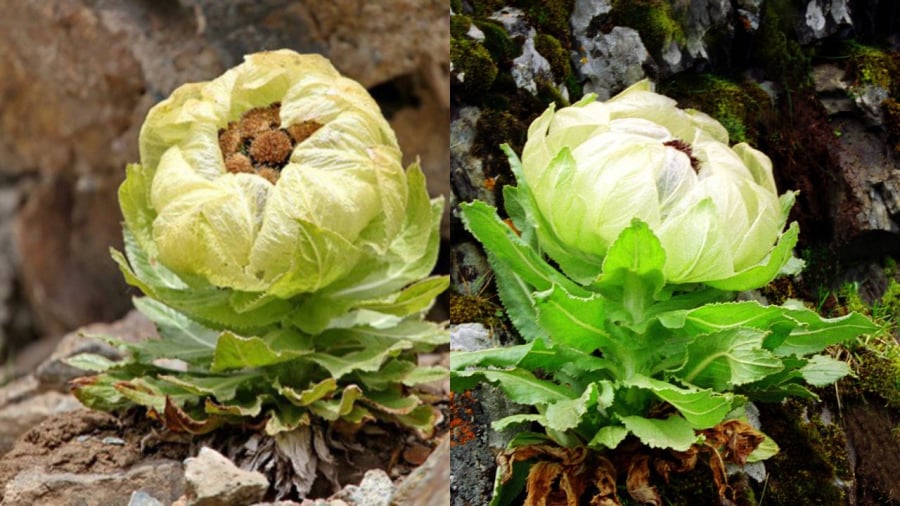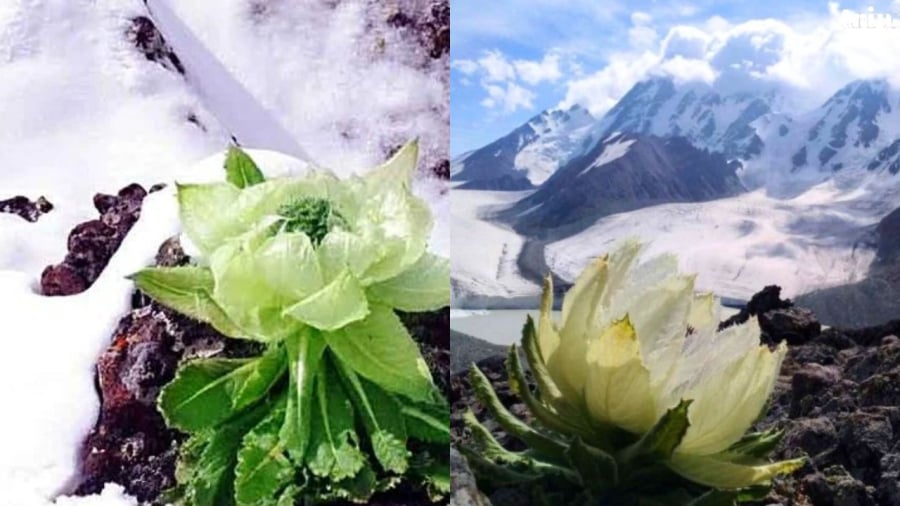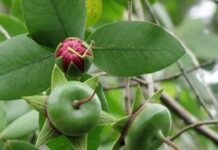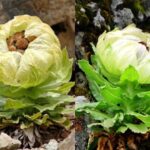The flower is called Tian Shan Snow Lotus, a lotus that grows on snowy mountains. This flower is found amidst the cold, high mountains, where snow covers the peaks all year round. The flower possesses a pure and noble beauty. It not only appears in Chinese martial arts films with miraculous effects such as rejuvenation, increased vitality, but it also exists in reality, thriving in harsh nature, likened to a treasure of the snowy mountains.
A Legendary Flower Comes to Life
Once considered a mythical flower, in 2018, scientists officially confirmed the existence of the Tian Shan snow lotus on Mount Tian Shan, China. In 2020, it was also discovered in the Gobi Dzungarian region, at Baitag Bogd Mountain in Mongolia, about 250km away from Tian Shan. These findings affirm that the snow lotus is not just a symbol in folklore but also an extremely rare biological entity.

What makes this flower unique is its extremely slow growth cycle. It takes 5-7 years for the snow lotus to bloom, and each blooming period only lasts a few short days. Therefore, searching for and harvesting snow lotus flowers is incredibly challenging and time-consuming.
Pristine Beauty and Vigorous Life Force
The Tian Shan snow lotus captivates with its ethereal appearance, possessing a unique beauty. The petals are usually white with a hint of pale yellow, and the stamens shine with a reddish-purple hue, standing out against the pristine white snow. This flower grows from the crevices of snow-capped peaks, at altitudes between 2,500 and 4,000 meters, where harsh conditions make it difficult for most organisms to survive.
The snow lotus only germinates at 0°C, grows between 3 and 5°C, and can withstand temperatures as low as -21°C. The germination rate of its seeds is only about 5%, further emphasizing the resilience and value of this extraordinary flower.

The Legendary Snow Lotus and Its Miraculous Properties
In folklore, the snow lotus is associated with fascinating tales. It is believed that consuming just one snow lotus flower can protect the body from the cold and even reverse aging. The image of martial arts masters in Chinese wuxia novels eating snow lotus to increase their internal energy and heal their wounds has left a deep impression on enthusiasts of this genre.
While most of these miraculous effects remain in the realm of legend, in reality, the snow lotus is considered a precious herb. According to traditional medicine, this flower can support the treatment of kidney deficiencies, back pain, rheumatism, improve blood circulation, and more. Therefore, during its blooming season (July to August annually), people often collect the flowers to dry and preserve their medicinal properties.
High Economic Value and Risk of Extinction
Due to its slow growth rate, harsh habitat, and demand in traditional medicine, the snow lotus commands a high price in the market. Cultivated snow lotus flowers in China can cost a few dozen yuan each, but naturally grown ones harvested from the mountains can fetch hundreds or even thousands of yuan. In Vietnam, some wealthy individuals have been known to purchase snow lotus flowers for 4-5 million VND per flower, or 100-120 million VND per kilogram when bought in bulk.
Overexploitation has put this flower in a critically endangered state. In 2020, the International Union for Conservation of Nature (IUCN) raised concerns about the snow lotus’s risk of extinction due to excessive harvesting for traditional medicine. China has also included this flower on its list of wild plants in need of special protection.
Today, those who travel to Tibet or Xinjiang still hope to catch a glimpse of the snow lotus, a flower that embodies elegance amidst the cold, snowy mountains. More than just a rare flower, the snow lotus symbolizes resilience, enduring harsh conditions to bloom magnificently—a true emblem of strength, purity, and nobility.































